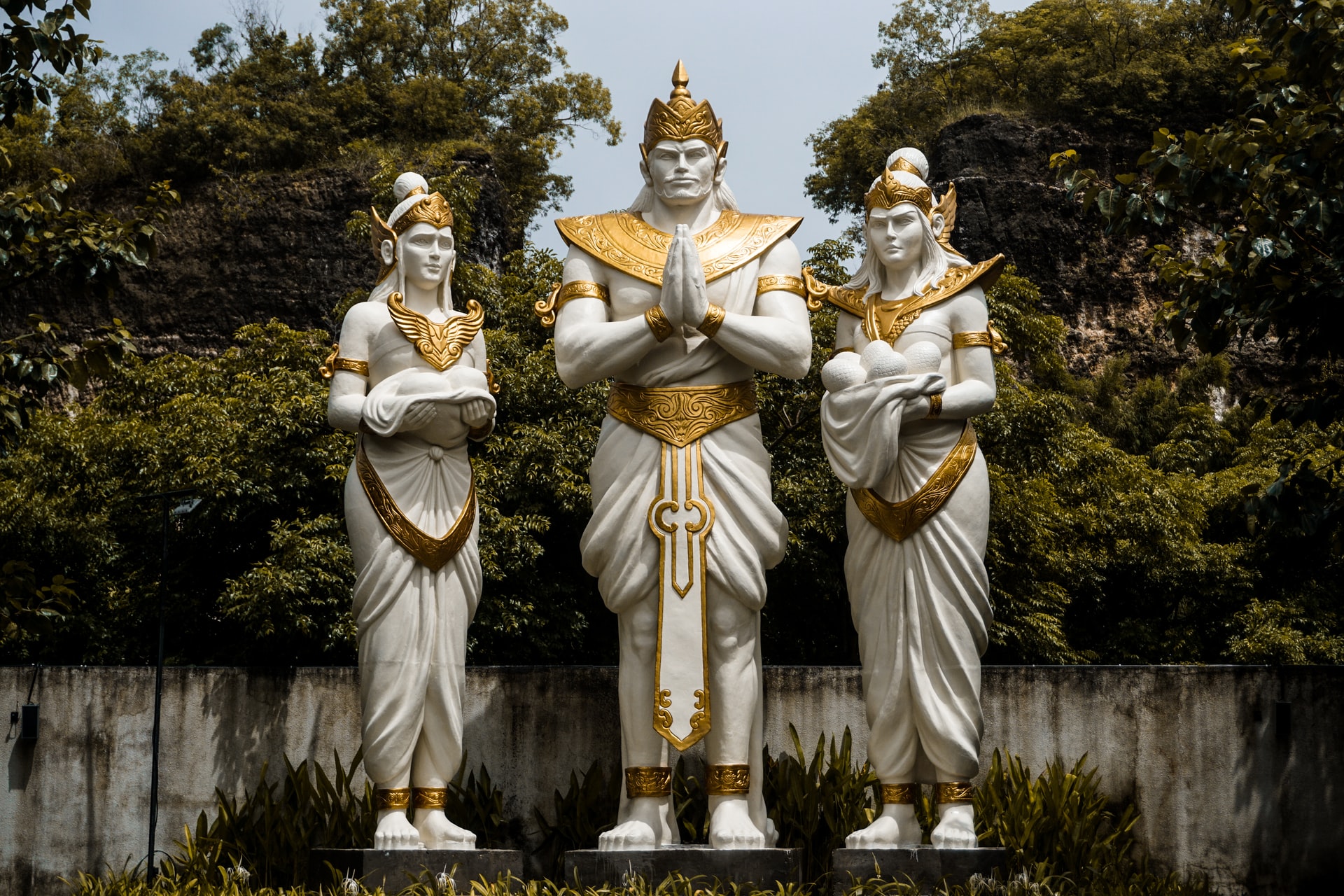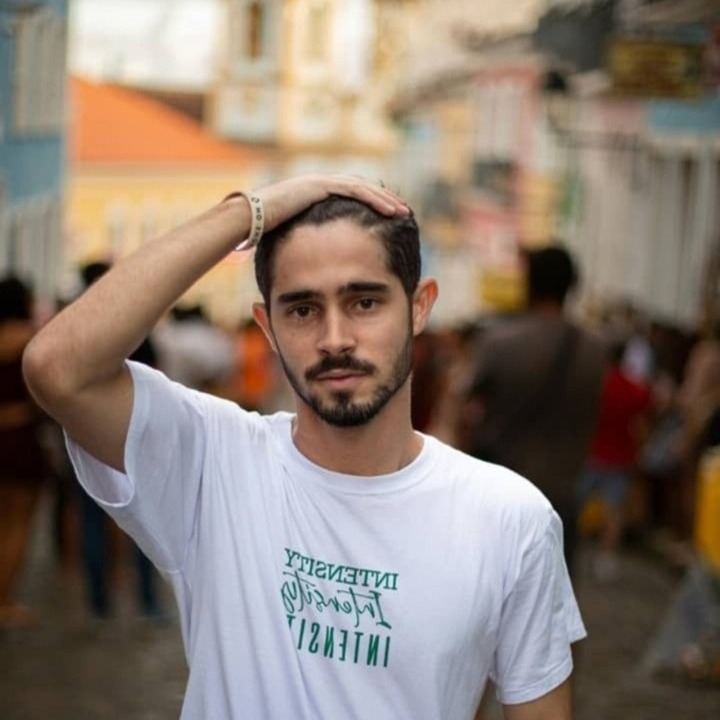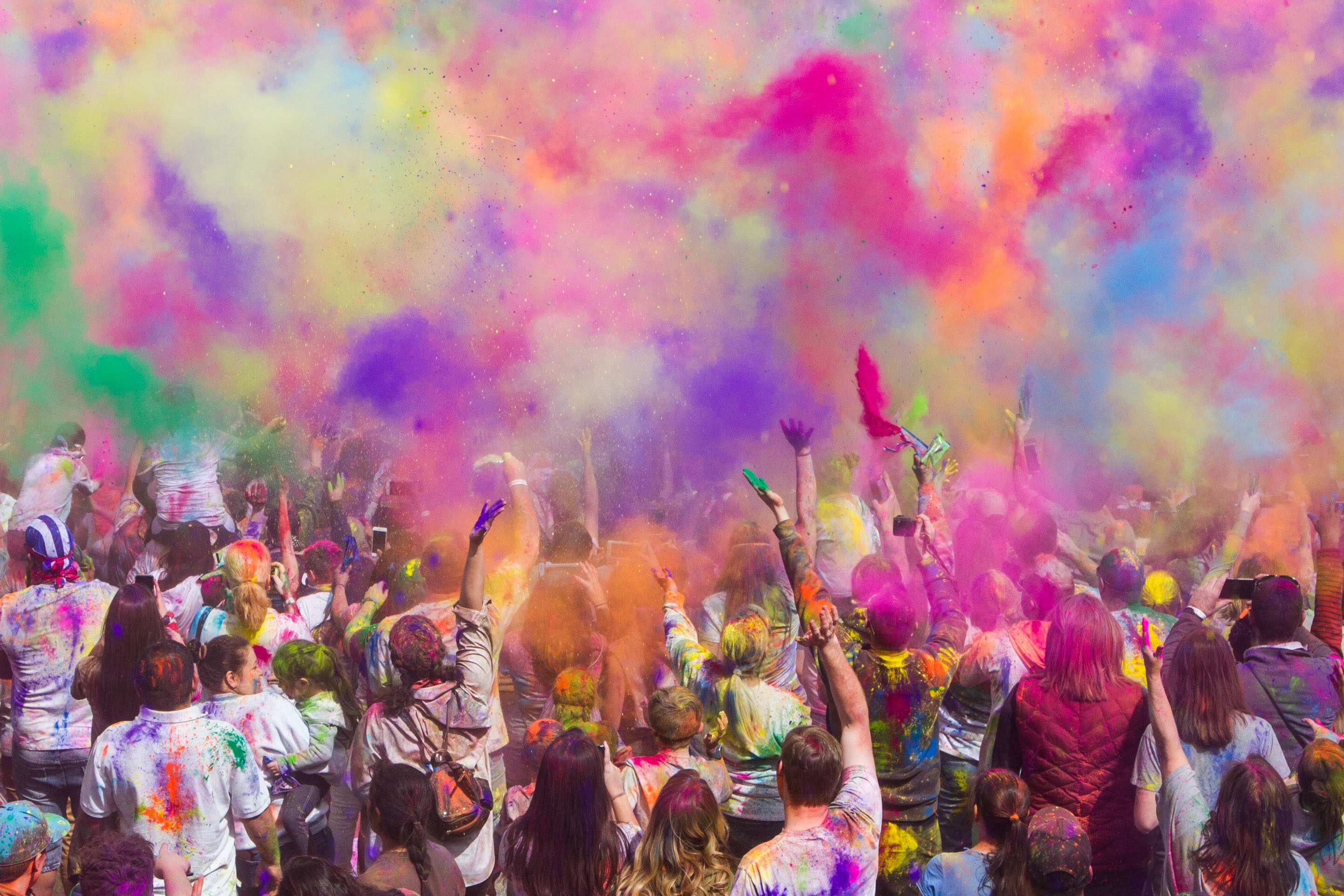The Top 10 Most Fascinating Exotic Festivals In The World
These exotic festivals are typically observed on a cyclical basis, such as the calendar year or the lunar calendar. Even for festivals celebrated all around the world, there isn't always agreement on the date or method in which they should be observed.
Author:Finn WildeReviewer:Sophia HarperApr 03, 2022130.4K Shares2.7M Views

There's always a big party going on, no matter what time of year it is. Every year, hundreds of distinct regional festivals take place all around the world. These exotic festivalsare typically observed on a cyclical basis, such as during the calendar year or the lunar calendar. Even for festivals celebrated all around the world, there isn't always agreement on the date or method in which they should be observed. There are some bizarre incidents you shouldn't miss, ranging from dangerous mountain excursions, roaring bulls, dancing devils, self-imposed stigmata, facing huge elephants, and smearing cor and tomatoes on random strangers.
Here are the details of some of the world’s most exotic festivals.
Battle Of The Oranges: Ivrea, Italy
In the midst of the traditional Carnival of Ivrea, Italy, there is an uncommon aspect that consistently draws attention: oranges. The Battle of the Oranges is exactly what it sounds like: three days of carnage caused by oranges. The whole event, which begins before Lent and ends on Shrove Tuesday, is founded on Ivrea's rich history, with uprisings of the citizens against past dictators at its heart. The Battle of the Oranges and the events leading up to it is historically significant. The event kicks off with a free meal of beans, a tradition that dates back to medieval times when religious or charity organizations allegedly handed beans to the destitute.
Thousands of residents are divided into nine historical teams and dressed in period garb. Ten youngsters, costumed in Renaissance garb, are supposed to symbolize Ivrea's five parishes. Each is wielding a sword with an orange impaled on it, symbolizing a tyrant's severed head. After the death of a dictator, a married lady is chosen to be the Mugnaia, or "miller's daughter," a heroine who symbolizes the union and triumph of Ivrea. The Battle of the Oranges, the primary event, takes place on the Sunday before Lent and involves over a million pounds of oranges.
But why oranges, exactly? With Napoleon's French forces invading Italy in 1796–97 and 1800, items that were formerly considered exotic in Ivrea, such as oranges, arrived. During the Carnival procession, a few residents began throwing oranges at each other as a game, and by the mid-1800s, the activity had become competitive. The Battle of the Oranges was born as a result of this. Over the years, the celebration has become much more complicated, with more and more historical symbolism added to it.
Blackawton International Festival Of Wormcharming: Blackawton, England
Cryonics may seem like a weird foundation for a festival, but it's nothing compared to this. On a rainy Sunday afternoon in 1983, Dave Kelland went to the bathroom in a field. Kelland was surprised when he realized that this action had resulted in a swarm of worms, so he decided to hold a tournament to test his newfound "worm charming" powers. As a result, the Blackawton International Wormcharming Festival was founded. In 1984, the Normandy Arms, a tavern in the hamlet of Blackawton favored by Kelland, hosted the inaugural competition.
The major event takes place in the open air. A plot of one square meter is allocated to each team of three people (a Charmer, a Pickerer, and a Counter). They are then allowed 5 minutes to "worm up," which means preparing the ground and any worms there for charming without the use of toxic substances or digging. After worming up, the teams have 15 minutes to attract as many worms as possible to the surface. At the time of writing, the world record is held by the Dartmouth Round Table, which captivated 149 worms in 1986. After counting, all worms are securely returned to their homes.
While the worms are vital, the Blackawton International Wormcharming Festival is also proud to help local charities. It generates funds to help the community with a variety of needs.
Nakizumo Baby Crying Festival: Tokyo, Japan
A wailing baby signifies that you've won at this event. Two sumo wrestlers enter the arena, each holding a baby, with the purpose of making the baby of their opponent cry. This 400-year-old tradition is based on the belief that a protracted cry will assure the newborns' well-being. An old Japanese proverb that expresses this sentiment is "Naku-ko wa sodatsu," which translates to "The wailing kid grows up."
In some parts of Japan, it is also believed that the harmless sobbing of a child may ward off evil spirits. Many of the babies will not cry easily because the event has a light environment. In that situation, the sumo wrestlers will wear frightening masks to make the newborns cry. If both babies cry at the same time, the one who cries the loudest is declared the winner.
Tapati Festival, Rapa Nui (Easter Island), Chile
What about a festival on one of the world's most isolated islands? Easter Island's Tapati Festival, held in February, combines sports competitions with singing and dancing. The latter takes place in Hanga Vare Vare at night on a stage. There's also storytelling and body painting. An island-wide triathlon – with local variations such as running while carrying roughly 20 kg of bananas – horse races, swimming contests, wave-riding and surfing, and canoeing are among the sports activities. The Haka Pei, which means speeding down a 45-degree slope of 200 meters on the stump of a banana tree, is a unique tradition for people in the area.
Rapa Nui week is referred to as "Tapati Rapa Nui," but it really lasts two weeks. It originated in the 1970s as a means of revitalizing Easter Island's culture and imparting the island's history to the young. And if that isn't enough, you can always go see the 900 Easter Island statues, also known as Rapa Nui moai.
Frozen Dead Guys Days, Colorado, Us
Nederland, Colorado, celebrates one of the strangest festivals in the United States, if not the world, each March. Frozen Dead Guy Days offer hundreds of live bands, as well as odd cold activities like polar plunging in fancy dress costumes and ice turkey bowling. The chilly festivities pay respect to the suspended animated Bredo Morstol, who sits in a shed on dry ice above the town, and are almost definitely unique in their origins. The theme of this frost fest is Morstol's afterlife and times, or more precisely, the fact that he has been frozen for a long time.
Frozen Dead Guy Days kick off with Grandpa's Blue Ball, which features three live bands and the coronation of the Ice Queen and Grandpa Costume Contest winners. Other things to look forward to are our live music, a Frozen Dead Guy lookalike contest, costumed polar plunging, a slow-mo parade of hearses, frozen t-shirt contests, icy turkey bowling, frozen salmon tossing, human foosball, brain freeze contests, and more.
Kanamara Matsuri Or Penis Festival, Japan
Thousands of fans participate in an age-old fertility custom with thousands of phalluses in different forms, sizes, and colors at Kanamara Matsuri in Kawasaki, or the Japan Penis Festival, as it is more informally known, in what must undoubtedly be one of Japan's most entertaining spectacles. Festivities are known for their mikoshi procession, in which huge phallus-shaped chariots are carried to the Kanayama Temple, which is nearby.
From penis-shaped chocolates and candles to the art of cutting vegetables into phallus forms to dressing up like a phallus, the Japan Penis Festival today has a more contemporary objective of encouraging safe sex, and it does it with vigour and energy. But one of the nicest things about Kanamara Matsuri is that it is all-inclusive, with everyone enjoying themselves—families with small children, the elderly, local drag queens, and international tourists all take part in the festivities.
Diwali In India
This light festival, which takes place between mid-October and mid-November, is observed by a variety of religions throughout India and beyond. It is celebrated in the Hindu, Sikh, and Jain communities as the triumph of good over evil, light over darkness, and wisdom over ignorance.
Walking through towns and cities, you'll notice lanterns and little clay lamps called diyas illuminating houses, stores, and public spaces, while floral displays illuminate the streets even more. Parades and live music are held throughout the course of five days of festivities, as are fireworks and the exchanging of presents and sweets.
Dia De Los Muertos, Mexico
The "Day of the Dead," a Mexican event held between October 31st and November 2nd, is a time for families to get together to pray for and commemorate their departed relatives. Ofrendas (altars) are frequently beautifully adorned with pumpkins and squashes, marigolds, candles, and sugar skulls, and may be found in both public and private areas. Ofrendas are used to "welcome home" the souls of loved ones. They are more of a doorway than a place of worship. Costumed parades are also held in several cities, most notably in Oaxaca.
Families gather at graves after dark, but the mood isn't solemn: there's feasting, stories, singing, and sometimes even a wandering mariachi band.
Québec Winter Carnival, Canada
Every year in January or February, Québec City celebrates the cold as locals and visitors flock to the city's brightly lit streets for a winter celebration. The carnival, which lasts two weeks, involves two nighttime parades led by Bonhomme ('good-natured guy,'), the carnival's joyful mascot, whose massive ice palace is created and carved especially each year and serves as a focal point for the celebrations.
You may also go ice skating and watch teams compete in ice canoe races along the Saint Lawrence River, as well as view other exquisite sculptures fashioned out of ice blocks. There's also lots of live music, street food, and heated terraces where you can relax and enjoy steaming hot chocolate while taking in the sights.
Carnival (Rio De Janeiro, Brazil)
Brazil's Carnival is often regarded as "the greatest spectacle on Earth," since it is perhaps the world's largest carnival (not to mention its craziest party). Every year, about 5 million people attend the event, with around 500,000 of them being tourists who come to view the show.
Carnival has traditionally been a religious festival. The Brazil celebration takes place in February or March, five days before the Catholic Lenten season begins, 40 days before Easter. It also marks the conclusion of a long, oppressively hot Brazilian summer.
Imagine a city filled with loud music, half-naked dancers shaking what their mom gave them, and 5 million people who have been frying in the heat for months, prepared to give up the things they love for 40 days.
That's right, it's THAT insane. This is because of the colorful costumes worn by the 70+ samba schools (each representing a different neighborhood) who are competing for cash and national attention.
This legendary festival ends in a wild, two-night celebration in Rio's magnificent Sambadrome, where 90,000+ people pay top cash to see the top 12 samba schools battle for the ultimate prize.
The carnival parades are frequently the stuff of legends, and the competition has annual themes. Many Latin American countries celebrate Carnival, but no one does it quite like Rio.
Which Is The Famous Festival In The World?
Brazil's Carnival is often regarded as "the greatest spectacle on Earth," since it is perhaps the world's largest carnival (not to mention its craziest party). Every year, about 5 million people attend the event, with around 500,000 of them being tourists who come to view the show.
Which Country Has Most Festivals In The World?
India has the most festivals, including regional and national ones.
Conclusion
Exotic festivals bring a new depth to your trips, whether they're commemorating life or death, animals, religious figures, rowing, or even ice carving. Music and colorful parades fill the streets. You may observe traditional ceremonies that aren't done at other times, and you're totally immersed in local life as everyone engages in the festivities.
Jump to
Battle Of The Oranges: Ivrea, Italy
Blackawton International Festival Of Wormcharming: Blackawton, England
Nakizumo Baby Crying Festival: Tokyo, Japan
Tapati Festival, Rapa Nui (Easter Island), Chile
Frozen Dead Guys Days, Colorado, Us
Kanamara Matsuri Or Penis Festival, Japan
Diwali In India
Dia De Los Muertos, Mexico
Québec Winter Carnival, Canada
Carnival (Rio De Janeiro, Brazil)
Which Is The Famous Festival In The World?
Which Country Has Most Festivals In The World?
Conclusion

Finn Wilde
Author
For Finn Wilde, the wilderness is more than just a destination - it’s a way of life. Over the past decade, he has led multiple expeditions in some of the world’s most remote regions, from the icy fjords of Greenland to the rugged trails of Patagonia.
Finn emphasizes sustainability in all of his adventures, helping participants connect with nature while promoting responsible exploration. His expeditions inspire individuals to explore the great outdoors while fostering a deep respect for the environment.

Sophia Harper
Reviewer
Sophia Harper’s photography acts as a portal to the soul of the places she visits. Drawn to South America’s landscapes and cultures, she has spent years capturing everything from the majesty of ancient ruins to the vibrancy of urban streets.
Sophia’s work isn’t just about documenting moments; it’s about evoking the emotions and stories behind them. A dedicated photographer, she has worked with local communities across South America to capture their rich cultural narratives through her lens.
Latest Articles
Popular Articles
